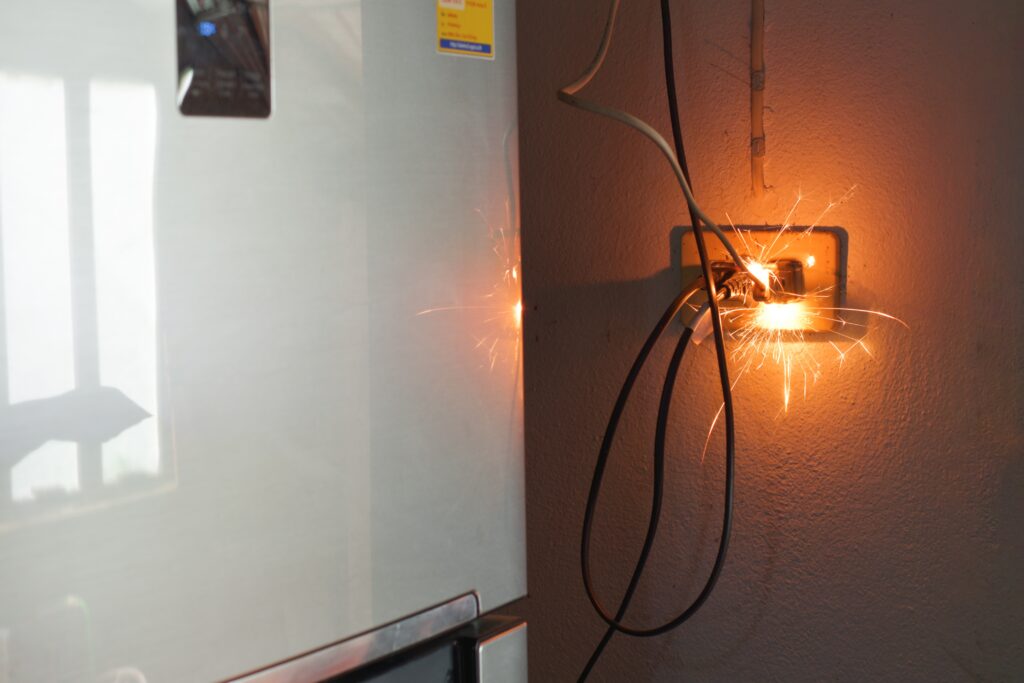When an accident occurs, it’s natural to focus on immediate causes like driver error or road conditions. However, a defective auto product, such as faulty tires or malfunctioning seat belts, could be the hidden culprit behind your injury.
At Biren Law Group, we’ve seen how defective products, such as flawed consumer products like kitchen appliances or tabletop fireplaces, can turn routine situations into life-altering tragedies. This article provides a detailed checklist of red flags to help you determine if a defective product contributed to your injury, along with actionable steps to protect your rights and why consulting an experienced attorney is critical.
Recognizing Signs of a Defective Product
Identifying a defective product as the cause of an accident requires careful observation. Here are key red flags to watch for:
- Unexpected Malfunction: Did a critical component, like a tire or brake system, fail suddenly without warning? For example, a tire blowout on a well-maintained vehicle could indicate a manufacturing defect.
- Inconsistent Performance: Did the product behave erratically, such as a seat belt failing to lock? Inconsistent functionality often points to design flaws.
- Recalls or Complaints: Has the product been subject to recalls or widespread consumer complaints? A quick online search for the product’s make and model can reveal patterns of issues.
- Unusual Wear or Damage: Examine the product for irregular wear, cracks, or damage that seems unrelated to normal use. For instance, premature tread separation on tires could signal a defect.
- Failure Under Normal Conditions: Did the product fail during routine use, such as a product catching on fire? Products should withstand standard operating conditions.
If any of these signs are present, a defective product may have played a role in your accident. Documenting these observations is crucial for building a potential case.
Common Products Linked to Injuries
Defective products span a wide range of industries, but some are more commonly associated with accidents and injuries. Here are a few examples:
- Vehicle Components: Faulty tires, brakes, airbags, or seat belts can lead to catastrophic crashes. For instance, defective tires may blow out at high speeds, while malfunctioning airbags may fail to deploy.
- Industrial Machines: Malfunctioning metal forming equipment, printing presses, or conveyor belts can cause severe injuries, such as crush injuries, amputations, or burns.
- Consumer Goods: Defective household appliances, power tools, or children’s products can cause fires, electrical shocks, or physical injuries.
- Pharmaceuticals: Contaminated or improperly labeled medications can lead to adverse reactions, worsening health conditions, or even death.
Understanding the type of product involved can help narrow down whether a defect contributed to your incident.
Questions to Ask After an Injury
To determine if a defective product caused or worsened your accident, ask yourself these critical questions:
- Did the Product Perform as Expected? Reflect on whether the product functioned as advertised. For example, did your seat belt restrain you properly, or did it fail to engage?
- Were You Using the Product Correctly? Ensure you followed the manufacturer’s instructions. Misuse can complicate claims, but proper use strengthens your case.
- Was the Product Maintained? Regular maintenance, like tire rotations, can help rule out user neglect as a cause of failure.
- Are There Similar Incidents? Research if others have reported similar issues with the product. Online forums, consumer reports, or recall databases can provide insight.
- Did You Receive Warnings or Instructions? Check if the product came with adequate warnings or clear instructions. Missing or unclear guidance could indicate a labeling defect.
Answering these questions can help establish whether a defect was a factor and guide your next steps.
Steps to Take if You Suspect a Defective Product
If you believe a defective product contributed to your accident, acting quickly is essential to protect your health and legal rights. Follow these steps:
- Seek Medical Attention: Prioritize your health by getting a professional evaluation, even for minor injuries. Medical records can serve as evidence linking the defect to your injuries.
- Preserve the Product: If safe, keep the defective product in its post-accident condition. Do not attempt repairs, as this could compromise evidence.
- Document the Scene: Take photos or videos of the accident scene, the product, and any injuries. Detailed documentation strengthens your claim.
- Gather Records: Collect receipts, warranties, manuals, or maintenance logs related to the product. These can demonstrate proper use and care.
- Report the Issue: Notify the manufacturer or retailer about the defect. File a complaint with the Consumer Product Safety Commission (CPSC) or relevant agency.
- Consult an Attorney: Product liability cases are complex, involving technical evidence and powerful corporate defendants. An experienced attorney can evaluate your case and guide you through the legal process.
Taking these steps promptly can make a significant difference in the outcome of your case.
Why Consulting an Attorney is Essential
Navigating a defective product claim without legal expertise is challenging. Manufacturers and their insurers often employ aggressive defense tactics to minimize liability. Here’s why partnering with an attorney from Biren Law Group is critical:
- Expert Case Evaluation: Our attorneys can assess whether a defect caused your accident and identify liable parties, such as manufacturers, distributors, or retailers.
- Access to Experts: Product liability cases often require engineers, medical professionals, or accident reconstruction specialists to prove defects. Our attorneys have networks of experts to build a strong case.
- Negotiation Power: Corporations may offer low settlements to avoid litigation. Our attorneys ensure you receive fair compensation for medical bills, lost wages, and pain and suffering.
- Legal Deadlines: Statutes of limitations restrict the time you have to file a claim. Our attorneys ensure compliance with all deadlines and legal requirements.
- Courtroom Advocacy: If your case goes to trial, our experienced lawyers will represent your interests effectively, presenting compelling evidence to support your claim.
At Biren Law Group, our team has decades of experience holding negligent manufacturers accountable and securing justice for injury victims.
Take Action Today to Protect Your Rights
A defective product can turn a routine moment into a life-changing accident. If you suspect a product defect caused your injury, don’t wait to seek answers. The sooner you act, the stronger your case will be. Contact Biren Law Group today for a free consultation. Our dedicated attorneys will review your case, answer your questions, and fight for the compensation you deserve.
Call us at (888) 401-7141 or contact us online to schedule your consultation now.

